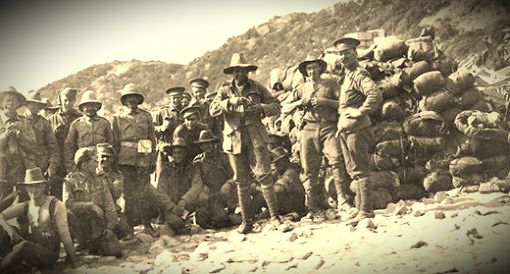The Anzac Corps, also known as the Australian and New Zealand Army Corps, was formed in Egypt during World War I. The corps consisted of troops from Australia, New Zealand, and other British colonies, who had volunteered to fight for the British Empire.
The Anzac Corps saw its first major action at Gallipoli in April 1915. The campaign was intended to open up a new front in the war by capturing the Ottoman Empire’s capital, Constantinople (now Istanbul). However, the campaign was a disaster, with both sides suffering heavy casualties. The Anzac Corps was eventually evacuated from Gallipoli in December 1915, having failed to achieve its objectives.
After the withdrawal from Gallipoli, the Anzac Corps was redeployed to the Western Front, where it served alongside other British and Commonwealth forces. The corps fought in some of the most significant battles of the war, including the Battle of the Somme in 1916 and the Battle of Passchendaele in 1917.
Despite their bravery and sacrifices, the Anzac Corps suffered heavy losses on the battlefield. By the end of the war, around 60,000 members of the corps had been killed, and many more had been wounded or taken prisoner.
Although the Anzac Corps no longer exists as a military formation, its legacy lives on in the Australian and New Zealand armed forces. Anzac Day, which is celebrated on April 25th each year, commemorates the anniversary of the landing at Gallipoli and honours the sacrifices made by Australian and New Zealand servicemen and women in all wars and conflicts.
In conclusion, the Anzac Corps played an important role in World War I, despite its failure at Gallipoli. The courage and sacrifice of its members are still remembered and honoured today, and their legacy continues to inspire future generations of service personnel.
The Anzac Corps
The Australian and New Zealand Army Corps (ANZAC) was a formation of soldiers from Australia and New Zealand who fought together during World War I. The ANZAC Corps was formed in Egypt in 1915 and was commanded by Lieutenant General William Birdwood.
The ANZAC Corps played a significant role in the Gallipoli campaign, which was one of the most famous battles of World War I. On April 25, 1915, the ANZAC Corps landed at what is now known as Anzac Cove on the Gallipoli Peninsula in Turkey. The aim of the landing was to open up a new front in the war by attacking the Ottoman Empire from the rear.
The landing was met with heavy resistance from the Turkish defenders and the ANZAC Corps suffered heavy casualties. Despite this, the ANZACs were able

















